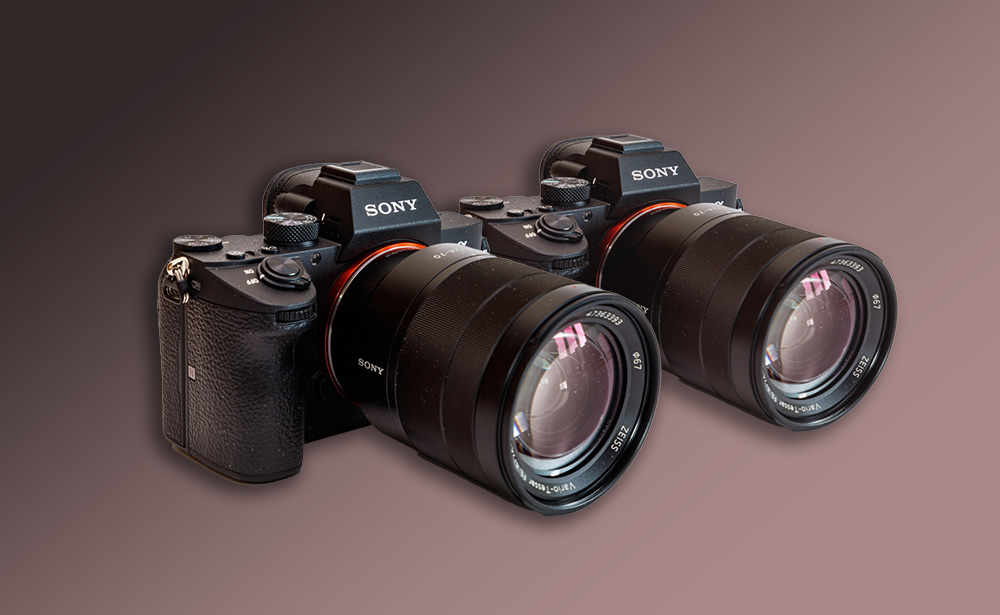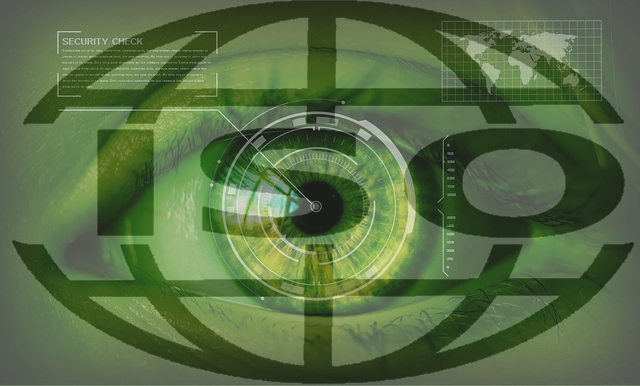Since its release in 2018, The A7 mark III has become the most popular full-frame camera, with its excellent quality, amazing performance, and competitive price. Sony’s new a7 IV includes a series of upgrades but it’s also seen a price increase.
Given how good the Sony a7 III was, we wanted to answer two questions: Which camera is the better buy, and is there any sense in upgrading?
In this article, we’re going to take a closer look at these two full-frame cameras to see how they differ and try to help you work out which is the better choice for you.
Sony A7 III vs A7 IV
-
Specification
Sony a7 III
| Sony a7 III Specs | |
|---|---|
| Announced | 27/02/2018 |
| Sensor | 24.2MP 35mm format BSI Exmor R CMOS |
| Lens system | E-mount |
| Weather proof | Yes |
| Internal Stabilisation | Yes (5-axis) |
| Autofocus | Hybrid with 693 phase and 425 contrast detection points |
| Continuous shooting | 3fps to 10fps with AE/AF Tracking |
| ISO Sensitivity | 100 – 51200 ISO (pull 50, push 204800) |
| Shutter Speeds | 1/8000 to 30s, Bulb |
| Viewfinder | 0.5in OLED with 2.36M dots, 23mm eye point, 0.78x magnification and 60fps refresh rate |
| Rear monitor | Tilting 3″ LCD (0.92M dots) with touch sensitivity |
| Movie recording | 4K up to 30fps, Full HD up to 120fps, S-Log and HLG gamma |
| Built-in Flash | No |
| Extra Features | WiFi, Bluetooth, Bracketing, Intervalometer, Tethering, Dual SD slots |
| Dimensions | 126.9 x 95.6 x 73.7mm |
| Weight | 650g (including battery and memory card) |
Sony a7 IV
| Sony a7 IV Specs | |
|---|---|
| Announced | 23/12/2021 |
| Sensor | 33.0MP 35mm format BSI Exmor R CMOS |
| Lens system | E-mount |
| Weather proof | Yes |
| Internal Stabilisation | Yes (5-axis) |
| Autofocus | Hybrid with 759 phase and 425 contrast detection points |
| Continuous shooting | 3fps to 10fps with AE/AF Tracking |
| ISO Sensitivity | 100 – 51200 ISO (pull 50, push up to 204800) |
| Shutter Speeds | 1/8000 to 30s, Bulb |
| Viewfinder | 0.5in OLED with 3.69M dots, 23mm eye point, 0.78x magnification and 120fps refresh rate |
| Rear monitor | Multi-angle 3″ LCD (1.04M dots) with touch sensitivity |
| Movie recording | 4K up to 60fps, Full HD up to 120fps, 10-bit 4:2:2 internal, S-Log, Cinetone and HLG gamma |
| Built-in Flash | No |
| Extra Features | WiFi, Bluetooth, Bracketing, Intervalometer, Wifi Tethering, USB streaming, Dual SD slots |
| Dimensions | 131.3 x 96.4 x 79.8 mm |
| Weight | 658g (including battery and memory card) |
-
Comparison
2.1. Sensor and Image Quality
The A7 III features a 24.2MP sensor. The sensor was new with a faster readout and a back-illuminated structure (BSI) than the previous models.
The A7 IV comes with a brand-new chip that increases the resolution to 33MP and uses a BSI design as well. It also features a faster image processor, the BionZ XR (8x time faster than the BionZ X on the A7 III, according to Sony)
- Resolution
The extra megapixels on the A7 IV are not very big, but it will give you an extra option for cropping your photos when required.
- ISO Sensitivity
The A7 IV retains the same ISO range as the A7 III
- Dynamic Range
The A7 IV has the option to choose a third compression option for the RAW files: Lossless Compressed. On the A7 III, it’s either Compressed or Uncompressed.
- Colors and profiles
In addition to Sony’s latest color palette that the company introduced with the A7S III, The A7 IV has a brand new color palette set called Creative Look.
Concerning the Auto White Balance, the A7 IV has a new setting called Shutter AWB Lock, which allows you to lock the white balance when the shutter button is half-pressed or at the first shot of a burst sequence.
2.2. Autofocus system
The A7 III features 693 phase-detection points and 425 contrast-detection points. The phase area covers approximately 93% of the sensor surface. The A7 IV increases the AF coverage slightly with a total of 759 phase-detection points. The contrast detection points remain the same (425).
- Single AF
Sony says that autofocus has been improved not only in continuous mode but also in S-AF mode, in which the phase detection points have been optimized to make focus acquisition quicker and more responsive.
- AF Tracking
The Sony a7 IV model sees a significant boost when it comes to autofocus software and machine learning. It has real-time tracking and real-time Eye AF that works for humans and animals, including birds. Eye AF works for video as well (including for animals and birds). Overall, Sony says that the accuracy of Eye AF has improved by 30% in comparison to the A7 III.

The photo is credited to depositphotos
- Eye AF for Birds
Eye AF works reliably with a vast range of humans and animals. On the A7 IV, Sony has added the possibility of doing the same with a bird’s eye.

- AF Performance for Video
The A7 III doesn’t have Eye AF for video, only face detection. There is some issue when shooting a video of a person walking towards or backward the camera, it loses focus for a few seconds. While the mark IV model does not has this issue and is more accurate.
2.3. Drive Speed and Buffer
The two products feature a mechanical, an electronic first curtain, and a fully electronic shutter mode. They can take pictures up to 1/8000s. Activating the electronic shutter doesn’t raise the speed further as it happens on other models.
The shutter sound is quieter on the mark IV model which makes the camera a bit more discreet when using the mechanical mode.
- Continuous Shooting
Both cameras have a maximum continuous shooting speed of 10fps, and they can maintain autofocus and exposure tracking at that speed.
- Buffer
Sony states that the A7 IV has a large buffer that allows you to save more than 1,000 JPG, lossless compressed or compressed RAW, or more than 800 uncompressed RAW files when using a CFexpress card. While the A7 III can save 182 JPGs, 76 compressed RAW or 40 uncompressed RAW images, using a UHS-II SD card.
2.4. Image stabilisation
Both cameras feature in-body image stabilization (5-axis). The A7 III has a rating of 5 stops of compensation, whereas the A7 IV has 5.5.
The IBIS mechanism works for video too, and both cameras deliver similar overall performance.
2.5. Build quality
The A7 IV has the same design upgrade seen on the A7S III, which is very similar to the A9 II and A7R IV.
- Size and Grip
The A7 IV is a bit larger in comparison to the A7 III and is a bit thicker because it features a heat dissipation structure (the same as the A7S III), which allows it to record 4K video for long periods of time without overheating.
Both the A7 III and A7 IV are dust, moisture resistant, and they have nearly the same weight.
- A7 III: 126.9 x 95.6 x 73.7mm, 650g

- A7 IV: 131.3 x 96.4 x 79.8 mm, 658g

2.6. Viewfinder
The resolution of the electronic viewfinder goes up to 3.69M dots on the Sony a7iv, while a7iii has a 2.36M panel.
2.7. LCD screen
The A7 III has an LCD screen that can tilt up and down, whereas the A7 IV has a variable angle mechanism that allows you to flip it to the side and rotate it 180˚. The resolution hasn’t changed much, however (0.92M and 1.04M dots respectively).

2.8. Memory cards

Both cameras feature two memory card slots that accept SD cards. On the A7 III, slot nb.1 is UHS-II compatible, whereas slot nb.2 is UHS-I only.
On the A7 IV, both slots can work with the faster UHS-II SD cards, and, what’s more, slot nb.1 also accepts the CFexpress Type A card, which provides faster writing and reading speed, and gives you a larger buffer memory.
| Sony a7III | Sony a7IV | |
|---|---|---|
| Slot 1 | UHS-II | UHS-II Cfexpress |
| Slot 2 | UHS-1 | UHS-II |
2.9. Interface and Battery

The A7 IV is compatible with the digital audio interface (via the multi-function shoe) which allows recording at 24-bit with 4 channels when using compatible microphones. It also has a full-sized HDMI port (vs Micro size on the A7 III).
Both products have a 3.5mm microphone input, 3.5mm headphone output, and a USB C port.
Finally, the battery is the same for the two cameras (NP-FZ100) but the A7 III retains a better rating (CIPA): 710 frames versus 610 on the Mark IV model (when using the LCD screen).
Both cameras accept USB charging and power delivery.
2.10. Video features
There are a lot of interesting improvements on the new camera when it comes to video.
- Frame Rate and Resolution
There is no crop with the A7 IV when recording 4K up to 30p. The A7 III uses the entire width of the sensor at 24p and 25p but applies a 1.2x crop when working at 30p.
- Color Depth and Bitrate
The A7 III can only work in 8-bit, while the A7 IV has the below capabilities:
-
- 10-bit 4:2:2 internal
- 10-bit 4:2:2 external (via HDMI and compatible recorder)
- XAVC HS codec option (H.265)
- All-Intra compression option (H.264) with a maximum of 600Mbps
- Recording Limitation
The A7 III has a 30-minute recording limitation per clip, while the A7 IV has a record time of more than 1 hour of uninterrupted 4K 60p footage.
2.11. Extra features
The A7 IV has extra settings and features you won’t find on A7 III
- Anti-dust Function: it allows you to keep the shutter curtains closed when the camera is powered off, to protect the sensor from dust when changing lenses for example.
- Aspect Ratio: in addition to 3:2 and 16:9, you can select 4:3 and 1:1
- USB Streaming: you can use the camera as a webcam with a USB-C connection.
- Wireless LAN: it works at 5Ghz, as opposed to 2.4Ghz on the A7 III.
- RAW transfer: you can send RAW files to your smartphone (in addition to JPGs).
- FTP transfer while shooting: you can connect the camera to a server via Wi-Fi, wired LAN (with USB C adapter), or a USB-tethered smartphone, and send images and video files while working. For the A7 III, only the Wi-Fi option is possible.
-
Comparison summary
Image quality: the A7 IV has more resolution, a bit more dynamic range, and updated color profiles with better skin tones
Autofocus: the addition of real-time tracking and Eye AF for Birds is a major improvement. Eye AF also works in video mode, unlike the A7 III.
Continuous shooting: the two cameras have the same 10fps burst speed, but that decreases to 6fps with uncompressed RAW on the A7 IV.
Video: there are a lot of improvements on the A7 IV including no recording limit, and 4K 60p (crop mode).
Image stabilization: the Active mode for video on the A7 IV is useful when walking with the camera.
Build quality: the A7 IV is more comfortable to hold and also has a better menu system.
Viewfinder: more resolution and frame rates.
Monitor: the A7 IV has a multi-angle LCD screen and more touch capabilities.
Memory cards: dual SD card slots on both cameras. The A7 IV can also use one CFexpress card (type A).
Price: the A7 III is less expensive.
-
Conclusion
The a7 IV is better than the a7 III regarding its higher performance and everyday usability. If you’re looking for a new camera we believe that the selling price of a7iv is fair for the performance you will get.
However, if you already have an a7 III and thinking of upgrading to an a7 iv the situation is a bit different. You only will benefits from the upgrading if you shoot fast-moving subjects, and you are shooting a lot of videos.
Related posts
Accessories For Sony Camera- Alpha 7III
Best Sony FE Lenses – My 6 Top Picks!
What Are The Best Speed Lights For Sony Cameras?
Sony Digital Camera Lenses- The Best Picks
Sigma Lens For Sony E Mount- Go For The Affordable Option
Thanks for reading, I hope you enjoyed the article, in case you have any questions just drop them below & I will be happy to answer you.
If you enjoy the site, don’t forget to subscribe, we will only inform you when a new article is posted.












I always love to see Sony and its trademarks in cameras. They have consistently improved their products, you will see it in their design upgrades and other features of video production. You got my attention drifted to the Sony A7 IV model when you mentioned its improved software with machine learning, real-time tracking and real-time eye AF
Thanks for the feedback
Thank you for doing a comparison review between the Sony a7III and the Sony a7IV. Sony remains one of my favorite digicams because of its impressive specs and features such as continuous shooting and shutter speeds. It’s also lightweight compared to other digicams.
I am looking to upgrade my Sony digicam but I couldn’t seem to decide between the a7III and a7IV. Feature-wise, I like both of them since there’s really not much difference except for a few upgrades in the a7 IV. And so, it now comes down to the pricing. If they are almost identical in quality, I would have to decide based on the price and my allotted budget.
They are both amazing cameras, thanks
I have been using Sony cameras for a long time, and I was delighted with the quality of the photos from these cameras. Considering the features of the a7 camera, I am sure that this camera also takes stunning photos. But if I want to choose between two cameras, a7 3 and a7 4, I would select camera a7 4 because it has better features overall .
Thanks for your feedback
When it comes to camera and capturing quality memories, Sony stands out as one of the best leading brands. The quality of their camera can never be debated. For me these are all great cameras. It’s just a matter of what your budget can carry and how much you focus of capturing indepth picture quality.
It is always a matter of money!